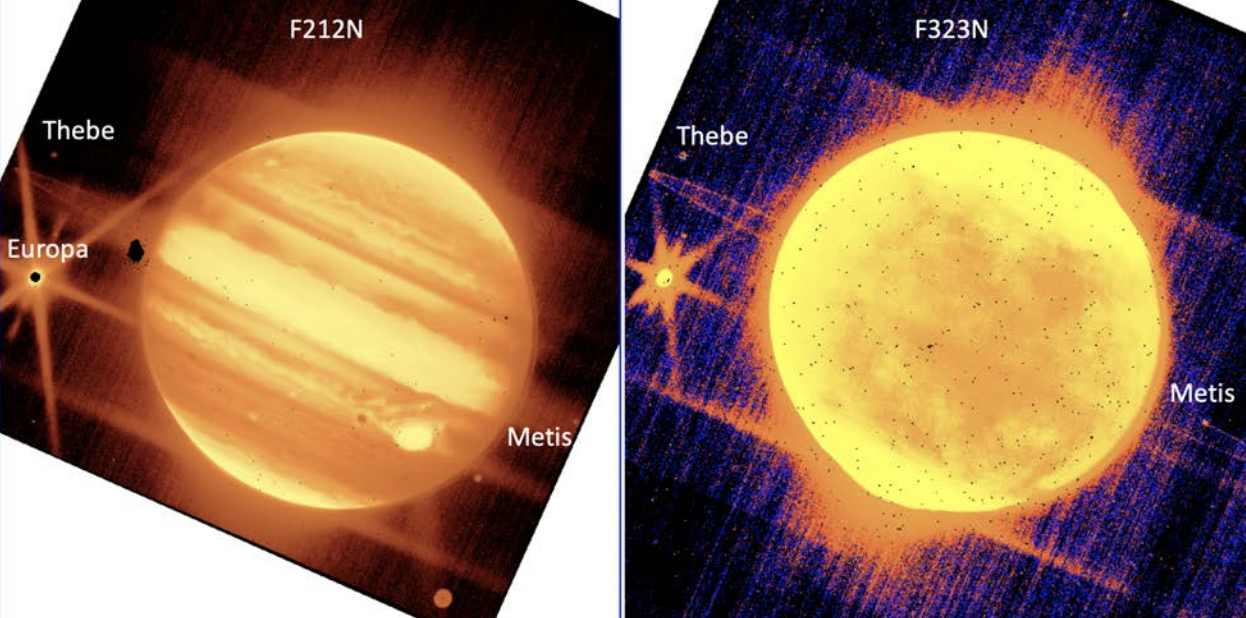This morning we were in a frenzy over a sneaky side-glimpse of a galaxy revealed in the first full-color James Webb Space Telescope (JWST) images.
But if you thought that was wild, then wait for this: it turns out JWST has also dropped some stealthy images of Jupiter! And they're ridiculously beautiful.
These images, taken while JWST was being tested, were provided in the JWST commissioning report.
The images, which you can see in greater detail below, show Jupiter and its rings as well as three of its moons: Europa, Thebe, and Metis.
You can also see the shadow of Europa in the image on the left, just next to the planet's tumultuous and infamous Great Red Spot.

Above: The image on the left was taken by the JWST Near-Infrared Camera using a filter that highlights short wavelengths. The image on the right is taken with a filter that highlights long wavelengths of light.
The images were taken by JWST's Near-Infrared Camera (NIRCam) and they use two different filters which highlight separate wavelengths of light.
Part of the test was ensuring that JWST could track fast-moving objects through the Solar System.
For this, JWST photographed nine targets, and Jupiter was the slowest moving – but, as you can see, one of the most stunning.
The test also showed that it's possible to use JWST to photograph details like moons and rings around a planet as bright as Jupiter.
"Observing a bright planet and its satellites and rings was expected to be challenging, due to scattered light that may affect the science instrument employed, but also the fine guidance sensor must track guide stars near the bright planet," the commissioning report explains.
"These observations verified the expectation that guide star acquisition works successfully as long as Jupiter is at least 140" away from the FGS, consistent with pre-flight modeling."
This is all good news as it means JWST will be useful at tracking things like near-Earth objects and comets.
Overall, the commissioning report shows that JWST is performing even better than expected.
"The key outcome of six months of commissioning is this: JWST is fully capable of achieving the discoveries for which it was built. JWST was envisioned 'to enable fundamental breakthroughs in our understanding of the formation and evolution of galaxies, stars, and planetary systems'," the authors write in the report.
"We now know with certainty that it will."
We're looking forward to more photo drops in the coming weeks and months



No comments:
Post a Comment